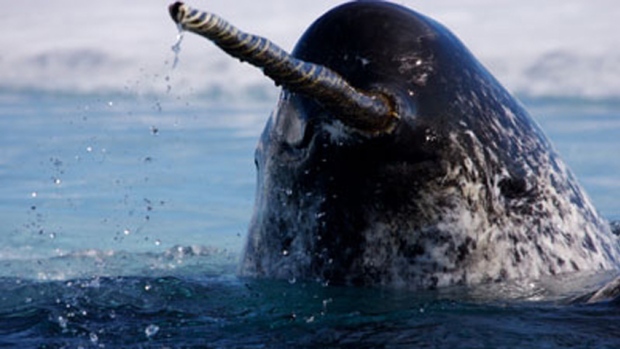A paper published Friday in the prestigious Journal of Science is focusing international attention on the high-tech ocean tracking research coming out of Nova Scotia, research that could influence future marine protected areas in Canada.
The article's lead author Nigel Hussey — a research associate working for the Ocean Tracking Network headquartered at Dalhousie University in Halifax — says he's amazed by the advances underway in underwater tracking.
"There's a new tag being tested now that you put inside an animal and if that animal gets eaten the coding of the tag switches so when that animal swims by a receiver the codes tells you that the animal has been consumed," he says.
"There's really exciting developments in the technology."
Nigel Hussey authored the report. (CBC)
Scientists are taking advantage of miniaturization and long-life batteries to install devices that send back information about tagged fish and mammals.
Acoustic receivers and satellites can follow them from the local bay to the entire North Atlantic.
"They are monitoring their own environment. This is the fabulous side of it ... We send a marine animal off with a device that can monitor salinity and temperature at the same precision oceanographers use," says Hussey, a University of Windsor academic whose research has taken him from the Red Sea to the Canadian Arctic.
"Instead of me and you going out on a boat where we are restricted. We may have two weeks. We can put one of these devices on an elephant seal for example and that animal is recording that data every minute of every day for a whole year. Our data growth is exponential," he said.
Hussey says the data could affect decision making.
It "would generate considerable dividends with regard to resource management, commerce, and food security," he said.
A way to manage northern fisheries
Information gathered by tracking Greenland halibut in Cumberland Sound off Baffin Island has already had an impact in the way a fishery is managed.
The Department of Fisheries and Oceans has divided the area into two management zones, one for local Inuit and the other for the offshore long line fishery.
Tracking the halibut showed they move seasonally within Cumberland Sound. Now the entire sound is considered one stock.
"We are only now starting to realize the true potential of what telemetry can do for management," said Hussey.
He suggests equipping narwhales with acoustic receivers could tell scientists about the distribution of Greenland halibut in Baffin Bay or the Davis Strait.
New commercially valuable fisheries are expected to develop in the north as ice retreats because of global warming.
Hussey also says tracking technology could influence future marine protected areas in Canada.
"Instead of these fixed areas which we set as boundaries we can have the marine protected areas moving on a seasonal basis in relation to what we know about the interactions in the eco system."
The report argues the data being produced from these "revolutionary" advances in ocean tracking should be shared publicly like research into human genetics.
